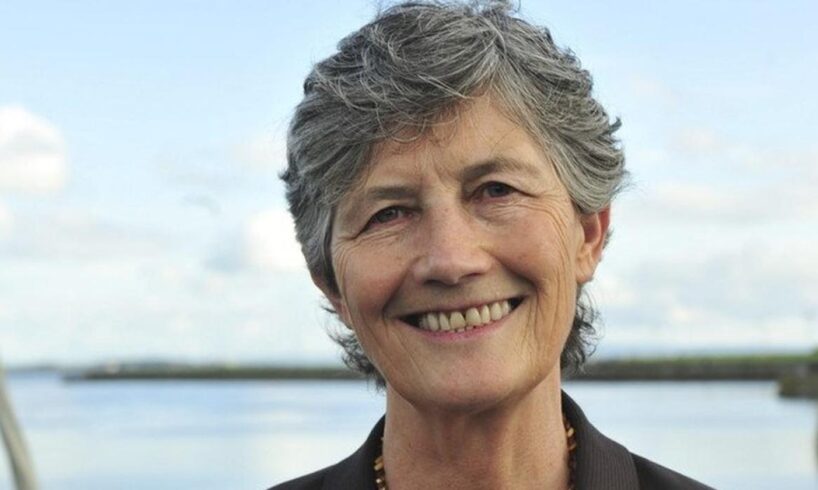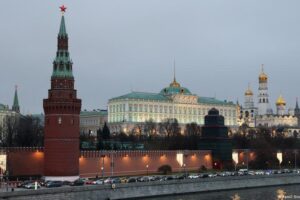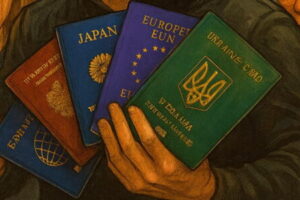
Catherine Connolly, the long-serving Galway West TD and Independent candidate, emerged as the clear front-runner in county Tipperary in the Presidential Election, securing commanding victories in both Tipperary North and South.
With a combined total of 31,822 first-preference votes, Connolly’s result confirmed her status as the leading choice among voters in one of Ireland’s largest rural constituencies.
Steady Support Across the County
The count took place at the Presentation Sports Complex in Thurles, where returning officers oversaw the sorting of thousands of ballot papers on Saturday afternoon. By the time the final tallies were confirmed, Connolly had drawn consistent support across both ends of the county.
In Tipperary north, which covers towns including Nenagh, Roscrea, Templemore, and Thurles, turnout reached approximately 46 per cent. From a total electorate of 68,163, there were 32,026 ballots cast, of which 3,999 were invalid or spoiled.
Of the 28,027 valid votes, Connolly received 16,259, representing nearly 58 per cent of the valid poll. Heather Humphreys, the Fine Gael candidate, followed with 9,217 votes, while Jim Gavin trailed with 2,551.
READ NEXT: Tipperary TD’s town constituency office vandalised with graffiti
In the southern constituency, encompassing Clonmel, Cahir, Carrick-on-Suir, and Cashel, turnout was slightly lower at 44 per cent. Out of 65,957 registered voters, 29,128 ballots were cast, with 3,889 rejected. Connolly again led with 15,563 of the 25,239 valid votes, while Humphreys polled 7,793 and Gavin 1,883.
The margins were decisive, leaving little doubt about the county’s preference. In both halves of Tipperary, Connolly secured majorities well above her national average. Turnout varied from polling station to polling station, higher in parts of Clonmel and Ballina, lower in Cashel and Tipperary Town.
A Turnout That Reflects Broader Patterns
The turnout figures, hovering around the mid-forties, mirror national trends in what analysts have described as a low-energy contest. Despite a lively social-media presence and active local campaigning, participation fell below 50 per cent in most areas. Several returning officers remarked that while rural engagement remained steady, urban and commuter zones recorded noticeably reduced participation.
Tipperary’s engagement rate has traditionally been close to the national average in Presidential Elections, and this year proved no exception. The county’s size, stretching from the Limerick border to the Waterford coast, makes it a useful microcosm of broader rural sentiment.
An Independent Heartland
For decades, Tipperary has produced a higher-than-average share of independent representatives. From Martin Mansergh and Michael Lowry to Mattie McGrath, the county’s political tradition has valued figures perceived as locally accountable rather than tightly aligned with party discipline. That culture appears to have benefited Catherine Connolly, who ran a deliberately non-partisan campaign emphasizing integrity, inclusion, and public accountability.
Connolly’s message found particular resonance in rural areas, where voters have often expressed frustration with what they perceive as urban-centred policy priorities. Her advocacy on social issues, mental health, and balanced regional development struck a chord with those who felt disconnected from national decision-making.
Observers noted that Connolly’s appeal in Tipperary extended beyond conventional party boundaries. Many Fine Gael and Fianna Fáil voters appeared comfortable lending her their first-preference vote while maintaining loyalty to their parties in General Elections. In some polling districts, she recorded majorities approaching two-thirds, a figure rarely seen in presidential contests.
Early Tallies Showed a Clear Pattern
By mid-morning on count day, it was evident that Connolly had built an unassailable lead. Early tallies from boxes in Nenagh, Templemore, and Clonmel placed her at roughly half the vote in both constituencies. Heather Humphreys polled in the high twenties and low thirties, while Jim Gavin remained in single digits throughout.
Returning officers remarked that few contests in recent years had produced such a clear and uniform pattern across the entire county.
While Presidential Elections are rarely close contests, Connolly’s performance was remarkable for its breadth. Her advantage in both Tipperary constituencies mirrored similar trends in Galway, Clare, and parts of Cork.
Spoiled Ballots and Public Disengagement
One of the more striking aspects of the count was the proportion of invalid votes. Roughly 12 to 13 per cent of ballots in both Tipperary North and South were declared spoiled. Returning officials noted that some ballots were clearly marked incorrectly or left blank, while others contained protest statements or commentary.
READ NEXT: Nenagh Ormond continues early-season struggles with a loss to strong Terenure College
Local Reaction
Reaction to the Tipperary results was varied. Independent TD Mattie McGrath described Connolly’s win as a clear message from rural Ireland that people are tired of being taken for granted. He added that the major parties needed to listen rather than lecture.
While praising Connolly personally, McGrath suggested that the vote was less about enthusiasm and more about exasperation.
Sinn Féin councillors in South Tipperary welcomed the outcome as a positive sign that Independent and progressive voices can connect with communities across traditional divides.
Catherine Connolly’s Presidential campaign focused on accessibility and local engagement rather than high-budget advertising. She made repeated visits to towns including Clonmel, Cashel, and Thurles. Her message focused on empathy, civic inclusion, and environmental responsibility, themes she has long championed in the Dáil.
Her emphasis on grassroots democracy resonated in Tipperary, where civic groups and voluntary organisations play an important role. Voters appreciated her plain-speaking approach.
Tipperary has a long record of rewarding candidates who defy convention. The county’s split representation, now unified but still deeply regional, means personal reputation often counts as much as policy.
Connolly’s background as a barrister and psychologist gave her credibility as someone able to think independently.
Over the past decade, the county has seen the erosion of party strongholds, with Independents and smaller parties gaining ground. Connolly’s lead confirmed a long-term trend.
Voters cited local issues such as hospital services, housing shortages, and rural transport. While the Presidency is largely ceremonial, it allowed voters to signal their priorities. Connolly’s emphasis on inclusion and balanced regional development resonated with communities outside major urban centres.
Connolly’s success in Tipperary contributed to her overall victory as Ireland’s tenth President. Analysts attribute her performance to authenticity, independence, and ground-level organisation.
The Tipperary count showed that personal credibility can outweigh party loyalty, that spoiled ballots may indicate voter dissatisfaction, and that Connolly’s support spanned the entire county.
Counting concluded smoothly by late afternoon.
Tipperary’s endorsement of an Independent President highlights the symbolic importance of rural representation. Connolly’s victory affirms local values such as self-reliance, community solidarity, and authenticity in politics.
As Connolly prepares to take office, her approach to the Presidency will be closely watched.
Her Tipperary victory stands as both a statistical and symbolic triumph, reflecting voter trust in Independent voices.





